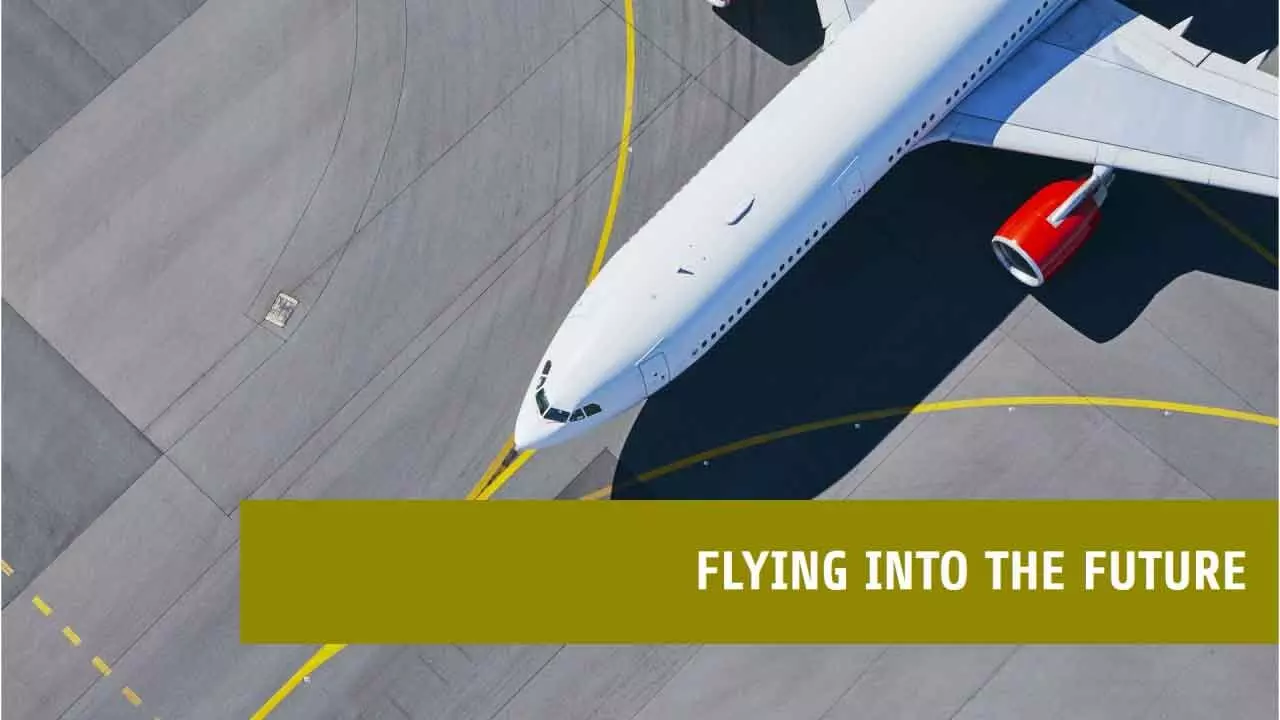Aviation Industry’s Growth Journey Will Scale Newer Heights In 2025
Total revenues will top the $one trillion mark for the first time in history
Aviation Industry’s Growth Journey Will Scale Newer Heights In 2025

CAPA India estimates that the total number of pilots required will rise to 22,400 by 2029, up from the current strength of 11,745. In 2023, the country issued 1,622 commercial pilot licenses (CPL) – the highest ever
The global airline industry can have a slight strengthening of profitability in 202 amid ongoing cost and supply chain challenges, according to the International Air Transport Association (IATA). The global Association is a grouping of around 340 airlines that account for more than 80 per cent of the world air traffic.
Net profits are expected to be $36.6 billion in 2025 for a 3.6 per cent net profit margin. That is a slight improvement from the expected $31.5 billion net profit in 2024 (3.3 per cent net profit margin). Average net profit per passenger is expected to be seven dollars (below the $7.9 high in 2023 but an improvement over last year’s $6.4).
Operating profit in 2025 is expected to be $67.5 billion for a net operating margin of 6.7 per cent (improved from the 6.4 per cent that is likely in 2024).
Total industry revenues are expected to be $1.007 trillion. That is an increase of 4.4 per cent from 2024 and will be the first time that the industry revenues top the $one trillion mark. Expenses are expected to grow by four per cent to $940 billion.
The footfall of passengers is expected to reach 5.2 billion in 2025, a 6.7 per cent rise compared to 2024. This marks the first time that the number of passengers has exceeded the five billion mark.
Cargo volumes are expected to reach 72.5 million tonnes, a 5.8 per cent increase from 2024.
In 2025, industry revenues will exceed $one trillion for the first time. It’s also important to put that into perspective. A trillion dollars is a lot—almost one per cent of the global economy. That makes airlines a strategically important industry.
IATA highlighted the broad benefits of growing connectivity. The most recent estimates show that airline employment is expected to grow to 3.3 million in 2025. Airlines are the core of a global aviation value chain that employs 86.5 million people and generates $4.1 trillion in economic impact, accounting for 3.9 per cent of global GDP (2023 figures). Connectivity is an economic catalyst for growth across industries.
“Looking at 2025, for the first time, traveller numbers will exceed five billion and the number of flights will reach 40 million. This growth means that aviation connectivity will be creating and supporting jobs across the global economy. The most obvious are the hospitality and retail sectors, which will gear up to meet the needs of a growing number of customers,” the Association pointed out.
India, one of the world's fastest growing civil aviation markets, has been taking a cautious stance on increasing bilateral flying rights as efforts are on to make the country a global aviation hub. More number of wide-body planes with Indian airlines will allow them to provide direct connectivity to various overseas destinations.
Driven by mega-mergers and fleet expansion, the country’s aviation industry is poised for substantial expansion this year. The sector is expected to witness significant developments, including the growth of direct overseas flights and efforts to reduce carbon emissions.
The domestic air traffic is projected to jump to 164-170 million by March and the long-term focus will be on increasing wide-body aircraft, providing more direct overseas flight connectivity and thereby making the country a global aviation hub.
The country’s aviation sector is soaring with ambitious growth plans, driven by increasing passenger traffic and fleet expansion.
However, a significant challenge looms: the shortage of skilled pilots. With the country requiring 10,900 additional pilots by FY 2030, industry experts warn that this gap could disrupt operations, increase costs, and hinder growth.
Jaideep Mirchandani, Group Chairman of Sky One, underscores the urgency of addressing this issue through innovative solutions, enhanced training infrastructure, and collaborative efforts to nurture and retain talent in the industry.
Two new airports -- Noida in the National Capital Region and Navi Mumbai in Maharashtra -- are expected to be operational this year. Both airports, set to ease the congestion at Delhi and Mumbai airports, have completed the validation flights.
The Indian aviation sector is expected to witness significant growth due to an increase in demand for air travel, fleet expansions, and introduction of new airlines. However, the sector will also need to address the challenges related to supply chain disruptions, pilot fatigue, and safety issues.
CAPA India estimates that the total number of pilots required will rise to 22,400 by 2029, up from the current strength of 11,745. In 2023, the country issued 1,622 commercial pilot licenses (CPL) – the highest ever.
However, even if the Directorate General of Civil Aviation (DGCA) maintains this issuance rate annually, there will still be a shortage of 2,375 pilots over the next five years. Industry experts believe this gap could impact India’s civil aviation sector, which is experiencing rapid growth in passenger traffic and fleet expansion.

